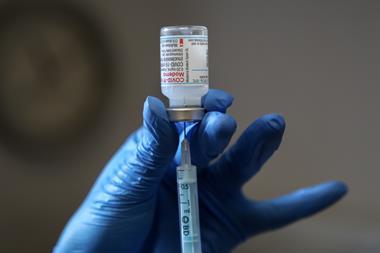Self-assembled nanotubes conduct an electric current in response to light.
Japanese researchers report the construction of a molecule that self-assembles into nano-sized tubes which generate a current when irradiated. The nanotubes could serve as building blocks for future nanoscale photovoltaics, electronics, and photo-detectors.
In previous work,1 Takuzo Aida and colleagues at the University of Tokyo, Japan, showed that an amphiphilic hexa-peri-hexabenzocoronene (HBC) molecule self-assembles into nanotubes in tetrahydrofuran. When oxidized, the tubes showed electrical conductivity similar to that of inorganic semiconductor tubes.
By adding trinitrofluorenone (TNF) to HBC, Aida’s team has now found that the nanotubes self-assemble and conduct an electrical current when irradiated.2
’Our nanotube adopts a coaxial donor-acceptor configuration where a molecular layer of electron-accepting TNF laminates an electron-donating graphitic layer of p-stacked HBC,’ Aida told Chemistry World. ’This architecture enables photoconduction, characterized by a large on/off ratio where the electrical current realized under light is 10 000 times greater than that in the dark,’ he said. ’Such a large on/off ratio is essential for optoelectronic applications.’

To trigger self-assembly of the nanotubes, which are 16 nanometres in diameter and several micrometres long, the researchers exposed a tetrahydrofuran solution of HBC-TNF to a methanol vapour. When the concentration of HBC-TNF in solution was higher than 1.2mM, non-conductive microfibers formed. When the concentration of the molecule was less than 0.12mM, however, photoconductive coaxial nanotubes self-assembled.
’These nanotubes are really of very high order and they seem to be pretty robust,’ Frank W?rthner, a supramolecular chemist at the University of W?rzburg, Germany, told Chemistry World. ’They make a very promising field of research,’ he said.
Researchers working in the emerging field of supramolecular electronics aim to use organic nano-objects with well-defined electronic functions as components in, for example, light-emitting diodes, transistors, and photovoltaic cells. These organic devices are expected to be more efficient, lightweight, and have a good cost performance compared with conventional silicon-based electronics, said Aida.
’The key fabrication process to achieve supramolecular electronics consists of bottom-up nanotechnology based on self-assembly of functional molecular building blocks,’ explained Aida. ’Our nanotube provides an ultimate molecular design strategy to achieve a donor-acceptor heterojunction with an extraordinarily wide interface, which is really needed for photoconductive and photovoltaic materials.’
However, said W?rthner, ’such structures are not yet easy to integrate into currently available technologies.’
Jessica Ebert
References
et alScience304et al,Science314, 1761






No comments yet